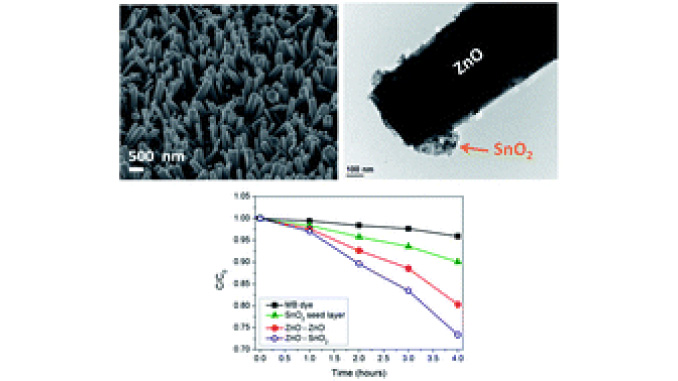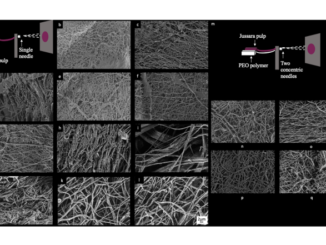
Writers:
Keywords: heterojunctions; nanostructured; photoluminescence; semiconductors
Abstract: The use of nanostructured heterojunctions has been a promising option for hindering the charge recombination and thus enhancing the photocatalytic performance of catalysts. Here we present a simple strategy to hierarchically grow heterostructures using a hydrothermal treatment route. A buffer SnO2 film was produced by a sol–gel derived method, resulting in a film of approximately 100 nm composed of 5–10 nm nanoparticles. X-ray diffraction and scanning electron microscopy revealed preferential growth of the nanorod-like structures along the c-axis perpendicular to the SnO2 film, with an average nanorod diameter and length of approximately 160 nm and 1.5 μm, respectively. The photoluminescence spectra of ZnO–SnO2 revealed a reduction in UV emission compared to individual ZnO nanorods, indicating that the recombination of the photogenerated carriers was inhibited in the heterojunction. This behavior was confirmed by evaluating the photocatalytic performance of such films against methylene blue degradation, showing that the as-prepared ZnO–SnO2 heterojunction was superior to the individual semiconductors, ZnO and SnO2.




